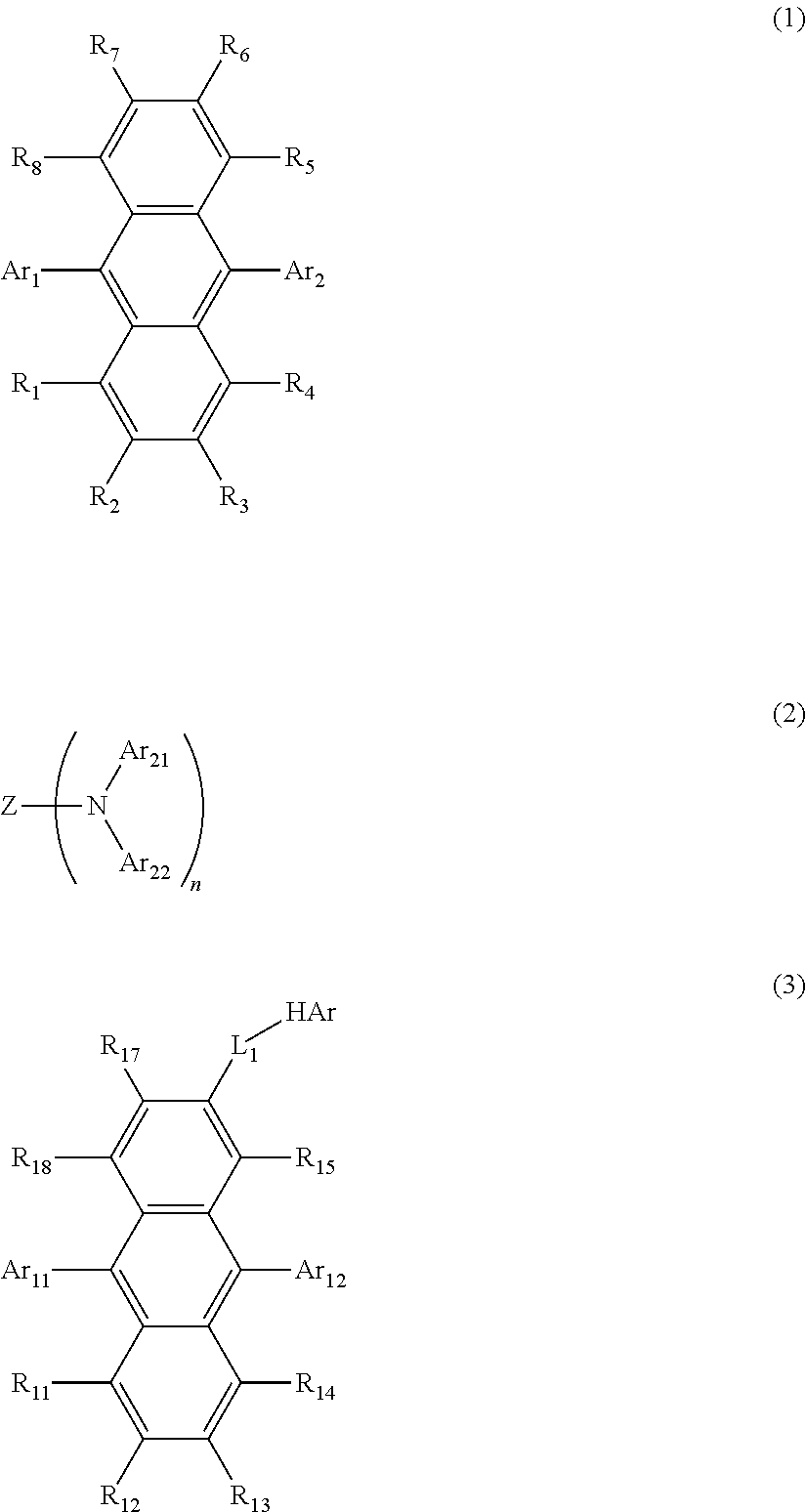Organic electroluminescent element
a technology of electroluminescence element and organic el, which is applied in the direction of luminescnet screen of discharge tube, pyrene dye, organic chemistry, etc., can solve the problems of difficult to improve the performance (particularly durability) of the blue organic el device, and the early development of the organic el device is insufficient in drive voltage, luminous efficiency, durability, etc., to achieve the effect of reducing dopant, improving lifetime, and facilitating electron acceptan
- Summary
- Abstract
- Description
- Claims
- Application Information
AI Technical Summary
Benefits of technology
Problems solved by technology
Method used
Image
Examples
first embodiment
[0096]The organic EL device according to the invention may have a layer configuration that includes at least one emitting layer, for example. Specific examples of the layer configuration are shown below.[0097](1) Anode / emitting layer / electron-injecting / transporting layer / cathode[0098](2) Anode / hole-injecting layer / emitting layer / electron-injecting / transporting layer / cathode[0099](3) Anode / hole-injecting layer / hole-transporting layer / emitting layer / electron-injecting / transporting layer / cathode
[0100]Among these, the configuration (3) may preferably be used. However, it is not limited to these configurations.
second embodiment
[0101]The organic EL device according to the invention may have a tandem device configuration that includes at least two emitting layers (units including an emitting layer), for example. The tandem device configuration normally includes a first emitting unit, a second emitting unit, and a carrier-generating layer (CGL) that is provided between the first emitting unit and the second emitting unit. The emitting unit sequentially includes at least a hole-transporting layer, an emitting layer, and an electron-transporting layer. The first organic layer according to the invention corresponds to the emitting layer, and the second organic layer according to the invention corresponds to the electron-transporting layer.
[0102]The emitting layer included in each emitting unit may be formed of a single layer, or may include a plurality of emitting layers.
[0103]The first organic layer according to the invention may be included in the first emitting unit, or may be included in the second emitting...
third embodiment
[0105]The organic EL device according to the invention may sequentially include an anode, a plurality of emitting layers, an electron-injecting / transporting layer, and a cathode, and may further include a carrier barrier layer between two emitting layers among the plurality of emitting layers, the emitting layer that is adjacent to the carrier barrier layer being a fluorescent emitting layer, the fluorescent emitting layer corresponding to the first organic layer, and the electron-injecting / transporting layer corresponding to the second organic layer.
[0106]Examples of a preferable configuration of the organic EL device according to the third embodiment include a configuration in which an anode, a first emitting layer, a carrier barrier layer, a second emitting layer, and a cathode are sequentially stacked (see Japanese Patent No. 4134280, U.S. 2007 / 0273270A1, and WO2008 / 023623A1), wherein an electron-transporting region that includes a barrier layer that prevents diffusion of triple...
PUM
 Login to View More
Login to View More Abstract
Description
Claims
Application Information
 Login to View More
Login to View More - R&D
- Intellectual Property
- Life Sciences
- Materials
- Tech Scout
- Unparalleled Data Quality
- Higher Quality Content
- 60% Fewer Hallucinations
Browse by: Latest US Patents, China's latest patents, Technical Efficacy Thesaurus, Application Domain, Technology Topic, Popular Technical Reports.
© 2025 PatSnap. All rights reserved.Legal|Privacy policy|Modern Slavery Act Transparency Statement|Sitemap|About US| Contact US: help@patsnap.com



